
Below we present a brief history of the Town of Randolph. This timeline is derived from the content provided in the Randolph History Panel by the Randolph Area Community Development Corporation.
If you believe there are other important events in the town history that should be included in this timeline please use the contact form to let us know.
18th century Randolph was shaped by the rich agricultural land at the confluence of several streams and rivers, including Thayer Brook, Ayer’s Brook, and the Second and Third branch to the White River. These river valleys, and the agricultural and forest products that grew so well there, were at the core of the town’s prosperity for 200 years. In addition to agriculture, the State Department of Agriculture worked hard to encourage silviculture, and wood products were a foundation of the economy. Mills for lumber, and eventually moldings and furniture, became very important to Randolph’s economy.
A pioneer named Experience Davis accompanied the St. Regis Native Americans to South Randolph and claimed 1,533 acres by squatter’s law. At this time Vermont was not an independent state, and Randolph was located in the New Hampshire Grants.
Vermont becomes the first state to abolish slavery.
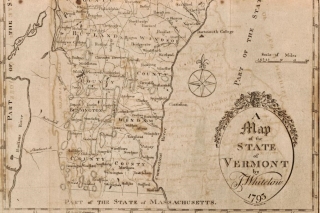
On June 29th, the General Assembly of Vermont granted Randolph’s Town Charter and by 1785 Town boundaries were established.
Justin Morgan, a teacher, composer, businessman and horseman moved to Randolph and bred a bay colt named Figure. Figure was the founding sire of the Morgan breed and was valued for his ability to hand down his legendary traits, such as his ability to out-walk, out-trot, out-run, and out-pull other horses.
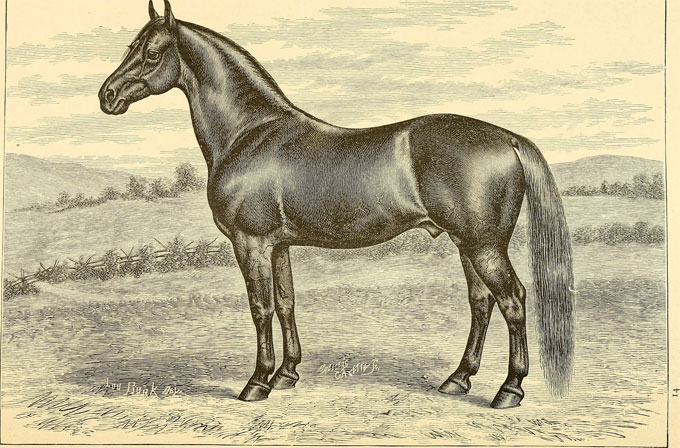
First Congregational Church was built near the intersection of the main east-west and north-south highways in Randolph Center, where it remains today. Churches were often the center of social and religious activities.
The first tavern in town was built at the present Red Schoolhouse in Randolph Center. Taverns served an essential role for residents and travelers. Mail and news were brought to taverns weekly. Taverns lost business when the railroads replaced the need for transportation by horse.
Orange County Grammar School and West Randolph Academy were founded in Randolph Center, at the site of what is now the campus of Vermont State University.
A Paul Revere bell was installed on the Congregational Church in Randolph Center, which served an early method of communication, as a demarcation of time, and also as an alarm in instances of fire and death.
The bell recieved by Randolph was made in the last year of Revere's life. See The Herald story on Randolph's history with bells.
The first Railroad came through Randolph. The railroad provided transportation, increased capacity of trading routes, and gave Randolph a social and cultural connection to the outside world that was important to the development of town life.
With the construction of the Vermont Central Railroad in the west side of town, the center of activity shifted from East Randolph and Randolph Center to West Randolph. Randolph’s public transit organization, Tri-Valley Transit, is headquartered on the location of the Railroad’s first town property.
Main Street developed into the shopping center of the town. Several companies and residences developed in West Randolph, including the Salisbury Furniture Company.
The “Green Mountain Herald” was established. The paper later changed its name to “Herald and News” in 1877. The Herald and News was sold to Mr. John Drysdale in 1945 and taken over by his son Dick Drysdale in 1971 and Tim Calabro in 2015. The White River Valley Herald continues to serve readers throughout the White River Valley.
The “Great fire” burned 14 businesses on the east side of Main Street. The buildings along the east side of Main Street were wisely rebuilt in brick
A new grammar school was established at School Street and Main Street. The school was located at 28 North Main, the current site of the offices of Dubois & King Engineers. The school’s original stone sign is displayed in the building’s lobby.
Sargent Osgood and Roundy Company moved to West Randolph on Prince Street. The company manufactured a variety of well-built farm implements and tools.
Dr. John Gifford’s Sanatorium (hospital) transformed a large mansion on the corner of South Main & Maple Streets into Cottage Hospital (now Gifford Medical Center).
Kimball Public Library was donated to the town by Colonel Robert J. Kimball, a local resident who became a successful financier in New York City, and philanthropist at home.
Randolph became a “dry” town. Bethel usually voted “wet,” so Randolph townspeople would often make their weekly purchases in Bethel, resulting in many accidents along Route 12

Chandler Music Hall was donated to the town by Albert B. Chandler, a friend of Colonel Kimball.
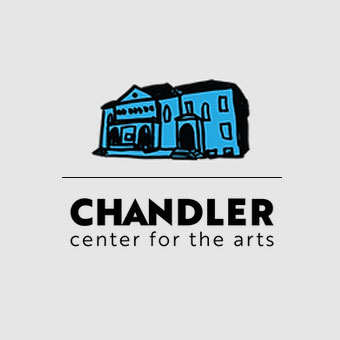
The State legislature determined the need for a state agriculture school and established the Vermont School of Agriculture. In 1957 Technical courses were added and the school changed its name to Vermont Agriculture and Technical Institute (VATI). In 1962, VATI changed its name to Vermont Technical College and it became a part of the State College system, now Vermont State University.
156 residents of Randolph served during World War I
There were 53 organizations in Randolph that ranged from religious, fraternal, social, political, benevolent, and literary.
In the Great Vermont Flood of 1927, the Main Street bridge over the White River collapsed and resulted in $50,000 in damages.
Over 300 residents of Randolph served in the armed forces during World War II.
Traditional industries such as wood-working were giving way to plastics and service enterprises. New manufacturing enterprises, like Vermont Castings, were occupying the industrial park on Beanville Road.
Route 66, connecting Randolph Center and East Randolph, was built by post-World War II state development projects to employ veterans coming home from the war
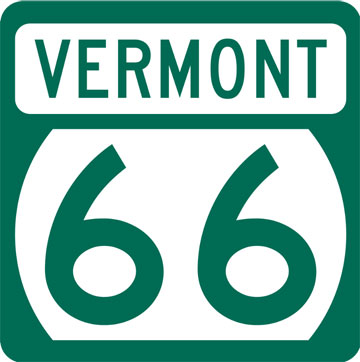
Randolph Union High School on Forest Street was built, which combined the towns of Randolph and Braintree. Brookfield joined later in 1966.
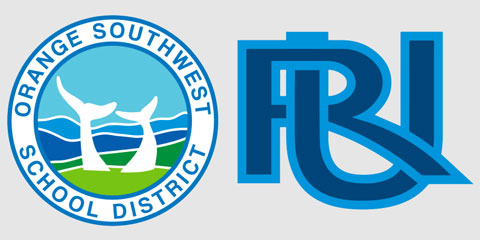
The interstate highway, I-89, was extended to the White River Valley. The highway adversely affected local farms and shops by making it easier to travel further from home for basic needs.
Orange County Mental Health Center was founded. The name was later changed to the Clara Martin Center in honor of one of its founders, who advocated for better care and rights and quality of life for those living with mental health challenges.
The first supermarket opened in a commercial “strip mall” about a mile south of the downtown. Today, Shaw's Supermarket is the anchor store of the Justin Morgan Plaza.
Peaceful demonstrators protested the Vietnam War on “Moratorium Day” on Main Street. The demonstration also brought out people who supported the war
Randolph’s economy shifted again. Wood-product manufacturing waned, but service and professional establishments grew. Formerly a shopping hub for the region, Randolph become an important cultural and service center for banking, insurance, and other professional services
Closing of Central Vermont Railroad organization
Former AmeriCorps VISTA volunteer, David Palmer creates the region’s first public transportation system, Stagecoach Transportation Services, Inc.
Three fires in Downtown Randolph burned homes and businesses, including over 50,000 square feet of commercial space (Belmain’s/Ben Franklin, Thomas Store, Stockwell block, and Sowles block). The US Department of Housing and Urban Affairs appropriates $1 million for Randolph revitalization.
The last typewriters at Randolph Union High School are replaced by computers.
Gazebo Park at Main & Pleasant Streets is donated to the town.
The Vermont Veterans Cemetery is dedicated in Randolph Center. It has sweeping views of surrounding farmland and a beautiful chapel ornamented with stained glass created by local artist Phil Godenschwager.
Randolph consolidates its elementary schools. The old downtown Village School closes and Randolph Elementary School opens. The East Randolph School is sold to the Clara Martin Center.
The former Red Lion Inn, vacant for 60 years, is rehabbed by the Randolph Area Community Development Corporation as downtown senior housing.
LEDdynamics, a Randolph company started by VTC engineering grads, revolutionizes lighting with its creation of the EverLED TR. It is the first LED tube light replacement bulb that allows existing fluorescent fixtures to be converted to LEDs by simply changing the bulb!
In 2007, a capital campaign celebrating the 100th Anniversary of Chandler, led to the completion of a significant renovation and addition project. The project both restored and modernized the Chandler, adding new offices and additional performance space, and improving accessibility. This campaign was made possible through the generousity supporters both near and far.
Tropical Storm Irene inundated Randolph and the surrounding area with the biggest flood since 1927
Vermont Lunar Cube Satellite, created by VTC professor Carl Brandon and his students, is launched. This was the first satellite of any kind built by a university in New England. VTC’s CubeSat remained in orbit for over 2 years.
Vermont Technical College launches new bachelor’s degree in Renewable Energy.
Twenty-eight volunteers built a $67,000 playground complex at the Randolph Recreation Field.
Randolph hires its first Economic Development Director who helps launch multiple projects including childcare, digital economy, advanced manufacturing, and outdoors initiatives.
Covid-19 pandemic has a tremendous effect on the town, as many business needed to close and the rest adapted to a new safety landscape.
Randolph voters approve the establishment of a new Randolph Police force.
Randolph Vibe website is launched. Hello!